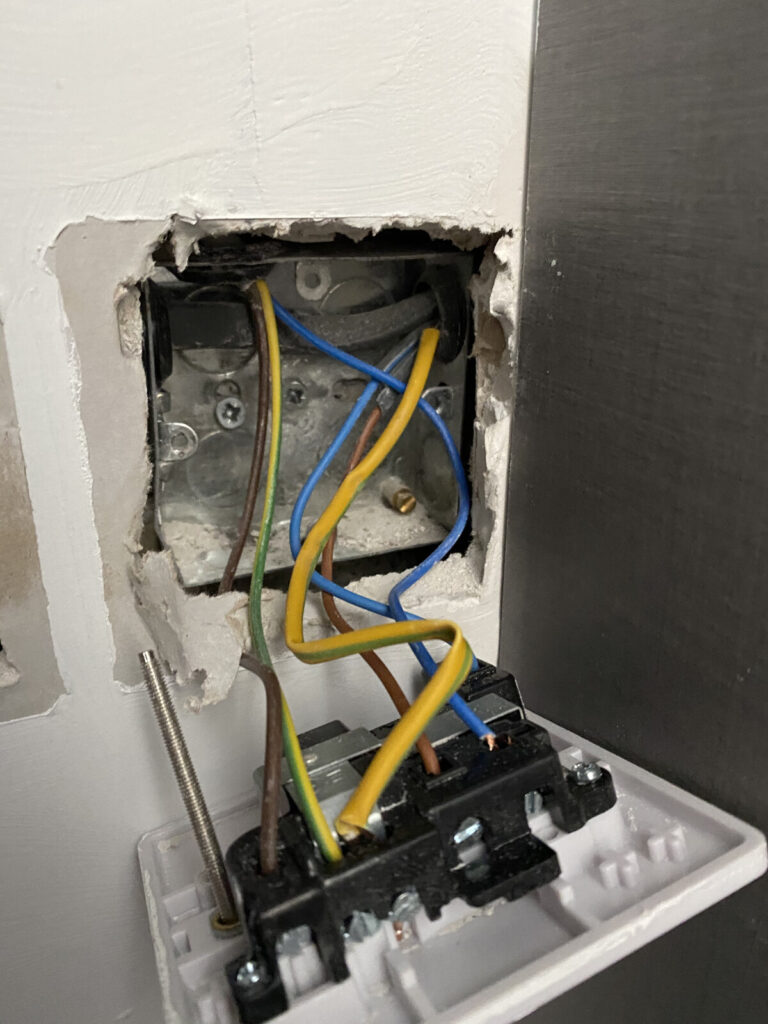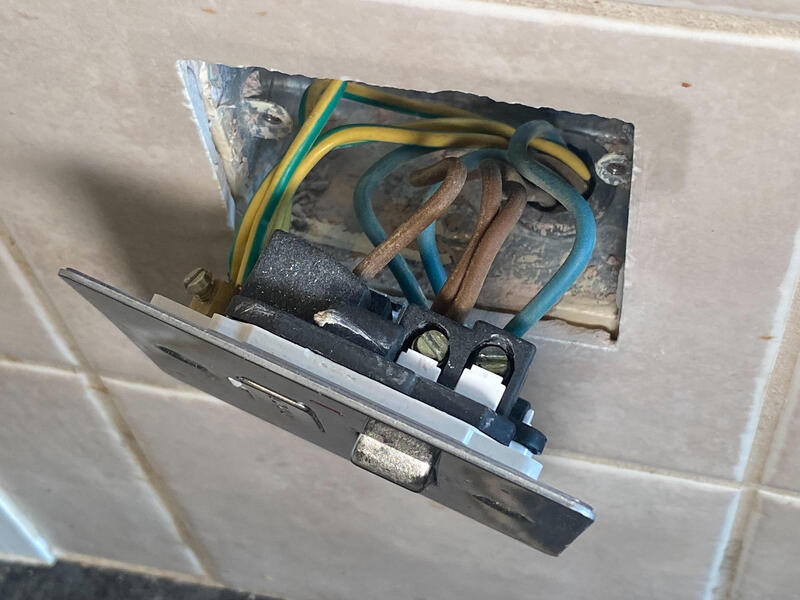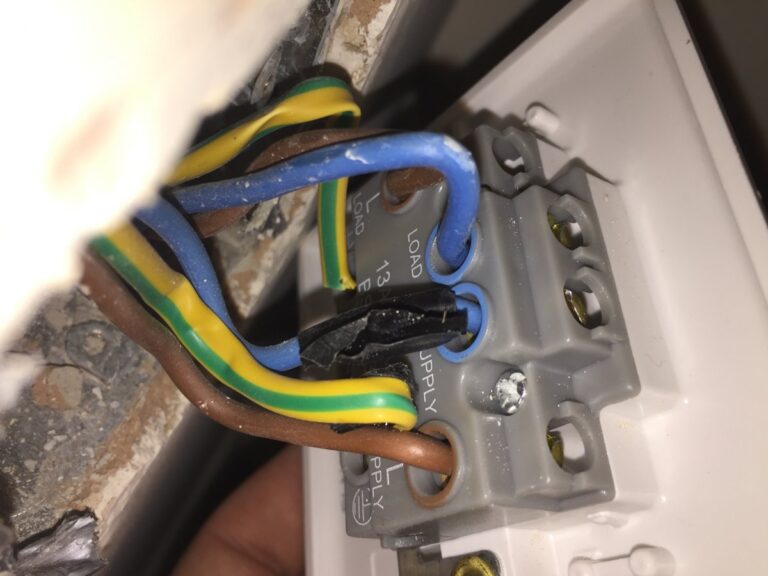Supply and load on a fused spur are like the ABCs of electricity. Think of a fused spur as a special plug that keeps things safe. The supply is where the electricity starts, connecting to the fused spur to provide power.
On the other side, the load is whatever you plug into the fused spur, using that electricity for things like gadgets or appliances. It’s important to understand these terms to keep things safe and working well. If we don’t, the fused spur might get too much electricity, which can be dangerous.
So, supply is where the electricity comes from, and load is what uses it—important for keeping your electrical stuff in check.
What is a Fused Spur?

A fused spur is essentially a special type of electrical socket or outlet with an added safety feature. It serves as a connection point for electrical devices and appliances.
The term “fused” comes from the fact that it has a fuse inside, acting as a protective measure. If there’s an overload or a fault in the connected device, the fuse breaks the circuit, preventing potential hazards like fires.
In simple words, it’s a safety-enhanced electrical socket that helps protect your home from electrical issues.
Role of a Fused Spur in Electrical Systems
The role of a fused spur in electrical systems is akin to being a gatekeeper for power distribution. It provides a dedicated point for connecting individual electrical devices or appliances.
This not only makes it easier to control power to specific areas but also enhances safety. The fuse inside the spur acts as a safeguard, breaking the circuit if there’s too much electrical demand or a malfunction in the connected device.
By doing so, the fused spur helps prevent damage to the connected appliances and, more importantly, reduces the risk of electrical fires, making it a critical component in maintaining a safe and efficient electrical system.
What is electrical supply on a fused spur?
Electrical supply refers to the source of power that energizes your home or a specific circuit. In simpler terms, it’s where electricity comes from.
The national grid or a local power station generates this electricity, which then travels through power lines to reach your home. When we talk about the supply on a fused spur, we’re referring to the connection point where this external electricity enters your household wiring.
How a Fused Spur Fits into the Supply Network
A fused spur plays a crucial role in the supply network by acting as a controlled entry point for electricity. It’s like a gateway that allows a specific amount of power to flow to the connected devices or appliances.
The fused spur is connected to the main electrical supply but serves as an intermediary, ensuring that the electrical load is manageable and safe.
The fuse inside the spur acts as a protective barrier. If the connected devices draw too much current or if there’s a fault, the fuse interrupts the circuit, preventing excessive power flow and protecting both the devices and the broader electrical system from potential damage or hazards.
What is ‘load’ on a fused spur?
In simple terms, load refers to anything you plug into a fused spur that uses electricity. It could be your phone charger, a lamp, or even the TV. So, when we talk about load on a fused spur, we’re talking about all the stuff that gets power from it. It’s like the workload or demand for electricity from the things you connect to that special plug.
Importance of Managing Load on a Fused Spur
Now, why does managing this load matter? Well, imagine your fused spur as a superhero that can handle a certain amount of power. If you connect too many power-hungry devices, it’s like giving the superhero too much to handle.
This can cause problems, maybe even a “power blackout.” So, managing the load on a fused spur is crucial to avoid overwhelming it.
By not plugging in too many devices or ones that use a lot of power, you keep everything running smoothly, and your superhero fused spur can do its job without breaking a sweat. It’s all about balance and making sure your superhero stays the hero!
Why it’s Important to Know About Supply and Load?
Knowing about supply and load is like having a safety manual for your home’s electricity. It helps you keep everything safe and sound. Understanding where the electricity comes from and how it travels through your home lets you make sure things work without any risks. You can use the right plugs and wires to prevent accidents or shocks. It’s like knowing the rules to play a game safely.
Imagine your fused spur as a superhero trying to carry too many things at once. If you connect too many gadgets, it’s like giving too much to handle, and that can be dangerous. Knowing about the load helps you avoid overloading, which could lead to overheating, fires, or damage to your devices. So, by understanding how much you can handle, you keep everything running smoothly and safely in your home.
What are common issues with fused spurs?

Overheating: Fused spurs can overheat due to excessive electrical load, faulty wiring, or poor connections.
Tripped Fuse: The fuse inside the spur may trip, interrupting the electrical circuit, often caused by overloading or a fault in connected devices.
Flickering Lights: If lights connected to the fused spur flicker, it could indicate loose connections, wiring issues, or a problem with the electrical supply.
Devices Not Working: Connected devices may not function correctly, signaling potential issues with the fused spur or the devices themselves.
Buzzing Sounds: Unusual buzzing or humming sounds near the fused spur could indicate loose components or electrical arcing.
Burn Marks: Visible burn marks or discoloration around the fused spur may suggest overheating or a past electrical issue.
Intermittent Power: Inconsistent power supply to connected devices may result from wiring problems or loose connections.
Complete Power Failure: A fused spur may fail to supply power altogether, indicating a severe fault or failure in the electrical system.
Insufficient Wiring: If the wiring connected to the fused spur is inadequate for the load, it can lead to performance issues and safety concerns.
Obsolete or Faulty Components: Aging or faulty components within the fused spur itself can lead to malfunctions and require replacement.
FAQ
Which is load and feed?
The load refers to the devices or appliances that consume electrical power, while the feed is the power supply coming into a system or circuit.
What is the load side of a fuse?
The load side of a fuse is the part of the circuit that receives power from the fuse after it has been protected.
What is the difference between load and power supply?
The power supply is the source of electrical energy, while the load is the part of the circuit that consumes or uses this electrical energy.
Which side is load?
The load side is the part of a circuit or device where the power is consumed or used.
Is the load side a supply side?
No, the load side is not the supply side. The supply side provides electrical power, while the load side receives and utilizes this power.
How do I know which wire is line and load?
Typically, the line side brings power into a device or circuit, while the load side distributes power to the connected devices. Consult device manuals or markings for confirmation.
Which side or transformer is load?
The load side of a transformer is the part that delivers power to the electrical devices or systems connected to it.
Final thoughts
Understanding supply and load on a fused spur is essential for a safe and efficient home electrical system. It’s like having the keys to a well-operating power setup. Keep an eye out for common issues, troubleshoot if needed, and you’ll be the master of a smooth and secure electrical experience at home.

